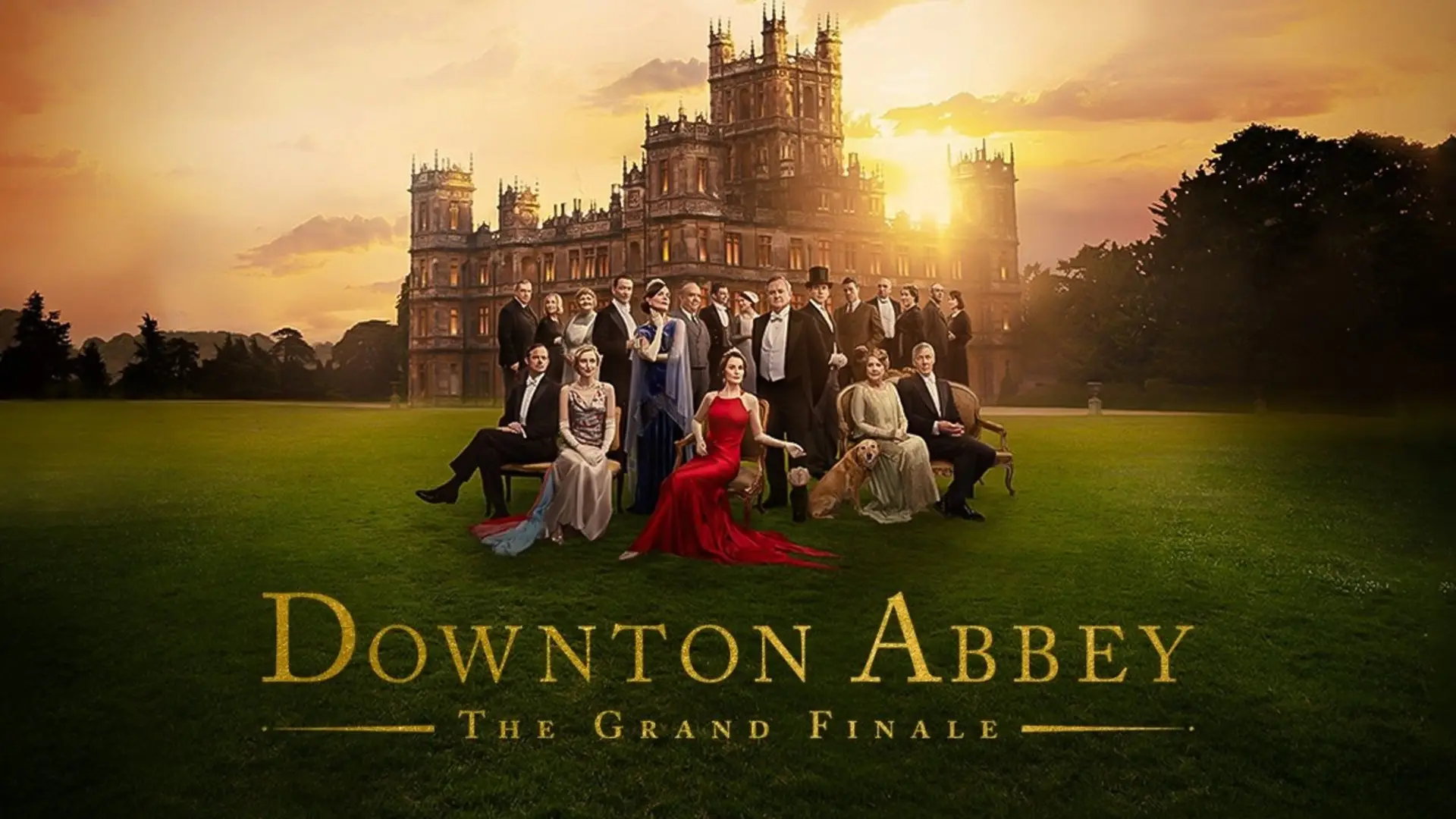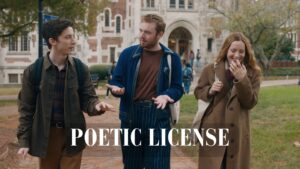Movie blog — Downton Abbey The Grand Finale.
A proper goodbye: legacy, scandal, and the slow turning of an era
After fifteen years of torpid parlour talk, aching close-ups and exquisitely roped corsetry, the Crawleys finally bow out. Downton Abbey The Grand Finale (2025) is Julian Fellowes’ valedictory note — a film that stitches up loose threads, stages a few last family reckonings, and asks one final time what it means to hand an ancestral house to a new generation. It’s not a radical reinvention of the franchise; it’s a carefully tailored farewell, crafted for the audience that has lived through the TV series and the two previous films. For fans, it’s a comfort — a familiar world set to the bittersweet rhythm of change. For newcomers, it’s a polite but occasionally distant historical drama about class, reputation and family duty.
Quick facts (so you can flex in conversation).
- Director: Simon Curtis.
- Screenplay: Julian Fellowes.
- Music: John Lunn.
- Release: Wide theatrical rollout in September 2025 (opening weekend Sept 12, 2025 in many territories).
- Runtime: ~124 minutes.
- MPAA/UK rating: PG.
- Budget (reported): ≈ US$50 million.
- Worldwide gross: roughly US$98–99 million.
Those box-office figures make it a dependable commercial performer — not a global smash, but a healthy finish for a prestige period property that’s always relied more on loyal audiences than blockbuster mechanics.
How many cast members — and who carries the movie?
If you enjoy an ensemble, Downton Abbey The Grand Finale is stuffed with them. The core returning principals — the cast the world has come to know — include Hugh Bonneville (Robert Crawley, Earl of Grantham), Michelle Dockery (Lady Mary Talbot), Elizabeth McGovern (Cora Crawley), Jim Carter (Mr. Carson), Penelope Wilton (Isobel), Laura Carmichael (Lady Edith), Allen Leech (Tom Branson), Joanne Froggatt (Anna), Lesley Nicol (Mrs. Patmore) and many more from the original TV ensemble, plus new additions such as Paul Giamatti (as Harold Levinson), Dominic West, Joely Richardson, Alessandro Nivola and Simon Russell Beale in supporting roles. IMDb and publicity materials list dozens of credited performers across household staff, relatives and society figures; the film’s full credits run long and read like a reunion roll call.
Who is the “means character” — the emotional anchor through whose choices we feel the story? Downton Abbey The Grand Finale has always been an ensemble, but this finale shifts more narrative weight onto Lady Mary (Michelle Dockery). The film hangs key conflicts on Mary — a scandal around her marital status and the practical question of who will steward Downton into the modern age — and much of the movie’s dramatic motor concerns her choices and their ripple effects across family and staff. Robert and Cora’s parental frame and the staff’s adjustments remain crucial, but Mary’s predicament is the filament that guides several plot strands.
The plot you need to know (without ruining the surprises).
Set in 1930, the Downton Abbey The Grand Finale film opens with the Crawley family already in motion toward modernity — cars, stage plays, talk of tourism and finance — but not without turbulence. News of Mary and Henry Talbot’s divorce causes an immediate scandal: in their social world, a divorced daughter raises questions about the estate’s standing and the perception of the dowager family. Simultaneously, financial anxiety surfaces when Cora’s American brother Harold (Paul Giamatti) arrives from the U.S. after the family receives bad news about inherited money and investments. These two pressures — public disgrace and financial fragility — combine to create the film’s twin stakes. The household must manage appearances while reckoning with a shifting economic foundation.
The story pivots between drawing-room drama and the staff’s quiet, practical resettling: there are backstage moments at a London play, a scandalous night that tests loyalties, and a prominent ball where the family’s social position is publicly tested. Meanwhile, the estate’s daily machinery — Carson’s stewardship, Mrs. Patmore’s kitchen, the younger servants learning new trades — is given a mindful send-off. The film culminates in decisions about succession and the symbolic passing of stewardship: the old world eases toward the new, and Downton’s future is reshaped by compromise and generational care.
Tone, niche and what this Downton Abbey The Grand Finale film is actually for.
Let’s be blunt: Downton Abbey The Grand Finale is for people who love Downton Abbey. It’s niche rests squarely in heritage drama — meticulously produced period pieces that signal refinement, moral constraint, class codes and costume confection. It’s not designed as reinvention. Instead, it’s an elegy in lingerie and silver-service: carefully staged tableaux, sharply written social comedy, and the slow burn of personal revelation. If you come for the aesthetics — the cinematography, the production design, the costumes — the film delivers. If you come for radical plot twists or modern sensibilities, you may be left wanting.
But the movie does something smart with the niche: it treats the Crawleys’ world as a place under pressure from modernity. That tension — aristocratic duty versus economic reality, private love versus public reputation — is the film’s real subject. It’s less interested in shocking the audience and more invested in emotional reckoning and graceful closure.

What works (the film’s strengths).
- Familiar comfort, impeccably staged. The production design and costumes are exquisite; the locations feel lived in, and the camera savours the house. For long-time viewers, that attention to detail is profoundly satisfying.
- Mary as a complex center. Michelle Dockery’s Mary has always been the franchise’s moral and emotional fulcrum; here she is afforded scenes with weight and moral ambiguity. Her scandal and its fallout make for a satisfying arc that marries personal regret to public consequence.
- A true ensemble send-off. Rather than sidelining staff or family members, the film gives small but meaningful final beats to many supporting characters — Carson, Mrs. Hughes, Mrs. Patmore, Tom Branson — so the feeling is less of a finale and more of a communal farewell. Those who have rooted for these people since 2010 will feel the tug.
- Emotional restraint. The film avoids mawkishness; it lets grief and joy sit together. When it mourns (and it does, in parts, notably in the absence of Maggie Smith’s iconic Dowager), it does so with a gentle dignity.
What doesn’t (where it trips).
- Perfunctory modernity. At times the movie’s attempts to show the world changing — through talk of finance, stage plays and the like — feel descriptive rather than interrogative. The Downton Abbey The Grand Finale film tells the audience things are different; it doesn’t always dramatize the structural causes or consequences of those changes.
- Safe storytelling. As a finale, some viewers will want sharper risks. Downton Abbey The Grand Finale chooses closure over provocation; the emotional stakes are internal and domestic, which may frustrate viewers who hoped for a more daring send-off.
- Pacing and crowding. With so many characters to honor, the film occasionally feels crowded — important relationships get barely a scene, and some threads are tied up quickly to make room for others. It’s the inevitable cost of a broad ensemble finale.
Box office and cultural footprint.
Financially, Grand Finale had a solid theatrical run for its type. It opened in roughly 3,700 theaters and posted a respectable opening weekend (about US$18.1M domestically), finishing its run at roughly US$99M worldwide — a tidy sum that places it among 2025’s dependable earners and marks it as the franchise’s profitable capstone. That performance is a reminder that heritage properties with dedicated audiences still have theatrical life in them — particularly when they promise closure.
Critically, the film skews positive among fans and fair-to-mixed among critics: reviewers praise craftsmanship and emotional closure but note the film’s safety. And culturally, its real value may be archival: a period piece about continuity, duty and the costs of legacy that will be revisited as the final, warm-hearted coda to a much-loved TV cycle.
Final verdict — who should see it, and why it matters.
If you’ve loved Downton Abbey The Grand Finale for a decade, The Grand Finale is the kind of affectionate goodbye you hoped for — tidy, tasteful, and emotionally quiet when it needs to be. It’s a film made for people who want to spend two hours in a well-lit, beautifully dressed world where characters are permitted to age, mourn and pass the torch.
If you’re looking for a radical rethinking of class or a reinvigorated, modernist take on the period drama, this is not your cup of tea. But as a final chapter — informed by affection, performed with care, and produced with old-school craft — it does precisely what it should: it honors its characters, salutes the audience’s investment, and closes a long story with decorum.
In the end the film asks a small, elegant question: if a house is an archive of lives, how do we steward it without lying to the past? For the Crawleys, the answer is compromise: continuity shaped by change — and that, in Downton’s language, is a satisfying way to say goodbye.





